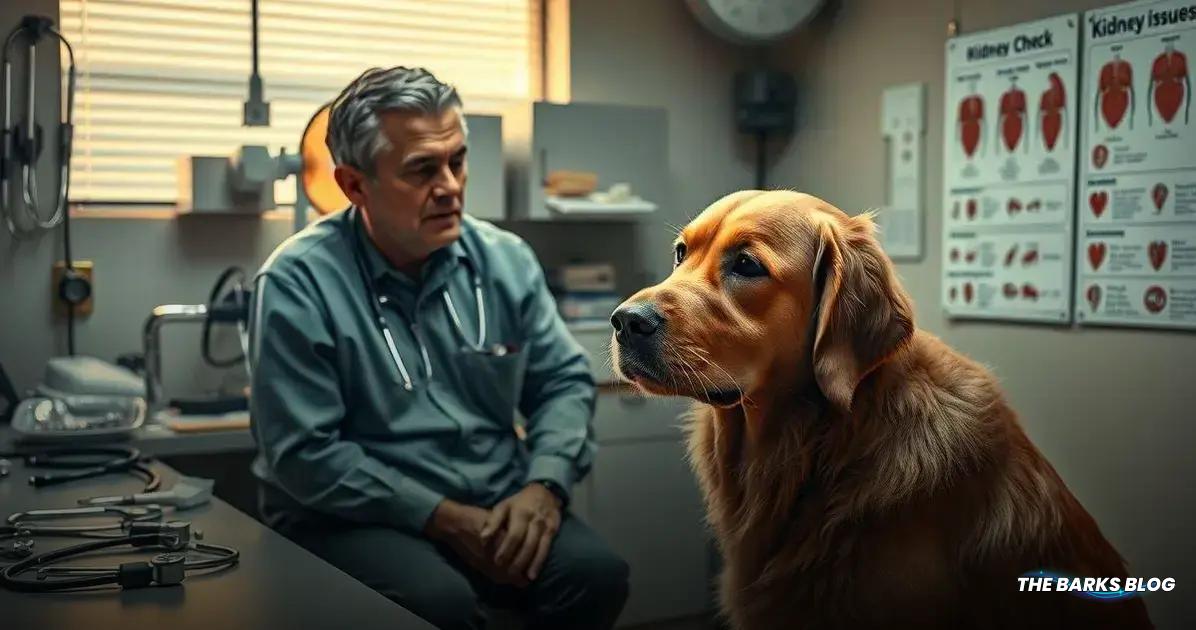Being aware of silent health threats like cancer, heartworm disease, kidney disease, and arthritis is essential for dog owners. Regular veterinary check-ups and recognizing symptoms such as lethargy, loss of appetite, and unusual behavior can lead to early detection and better outcomes. Proactive care and timely interventions are key to managing your dog’s health, ensuring they live a happier and healthier life.
Dogs are incredibly good at hiding their pain. By instinct, they are pack animals, so they hate to show any sign of weakness, it’s against their nature! Unfortunately, though, your dog’s silence allows diseases and conditions to spread or get worse, which can, in worst-case scenarios, end up being fatal!
Here at PetLab Co., we’ve taken a look at the four most common and serious ailments and diseases dogs may experience, which you should be aware of, as your pup might not let on their developing symptoms. Some pups won’t even display symptoms, so regular health checks at the vet are extremely important to attend to make sure your pup is not at risk…

Understanding Dog Cancer
Understanding Dog Cancer is crucial for every dog owner. Cancer is the leading cause of death in dogs over the age of 10, with about 50% of older dogs developing some form of this deadly disease. Unfortunately, many cancers can be difficult to detect in their early stages, as dogs often do not show obvious symptoms until the disease has progressed significantly.
Some cancers can be detected when a tumor appears, which is a cluster of abnormal cell growth in the body. However, there are types of cancers that don’t produce visible tumors, making them even harder to spot. This is why regular vet check-ups are essential, as your veterinarian can perform necessary examinations to catch any potential issues early on.
Common types of cancers seen in dogs include:
- Mast Cell Tumors: These tumors affect the skin and can appear as lumps or bumps.
- Lymphoma: This cancer affects the lymph nodes, leading to swelling and other systemic symptoms.
- Breast Cancer: Female dogs that are not spayed are at a higher risk of developing breast tumors.
For female dogs, spaying can reduce the likelihood of developing certain types of cancer, but it does not completely eliminate the risk. If cancer is caught early, it may be treatable through surgical removal of the affected tissues or chemotherapy. However, the decision to pursue aggressive treatment should always be made in consultation with your veterinarian, considering the dog’s overall health and quality of life.
Some symptoms of cancer in dogs to watch for include:
- Swollen body parts
- Loss of appetite
- Weight loss
- Lethargy
- Breathing difficulties
- Digestive problems
- Limping
Being vigilant about your dog’s health and noticing any changes in behavior or physical condition can make a significant difference in early detection and treatment. Regular veterinary check-ups are essential for monitoring your dog’s health and catching any potential issues before they become serious.

Identifying Heartworm Symptoms
Identifying Heartworm Symptoms is critical for every dog owner, as heartworm disease can be a silent killer. Often, this disease is caught too late in dogs, leading to severe health complications or even death. The symptoms of heartworm infection are not obvious in the early stages, allowing the disease to spread unchecked.
Heartworm disease primarily affects the blood vessels, lungs, and heart, potentially resulting in heart failure, lung disease, or damage to other vital organs. This is why it’s essential to be aware of the signs and symptoms associated with heartworm disease.
Some common symptoms of heartworm infection in dogs include:
- Constant Cough: A persistent cough is one of the first noticeable signs of heartworm disease.
- Fatigue: Dogs infected with heartworms often exhibit fatigue and may tire easily during walks or playtime.
- Hesitance to Exercise: If your dog seems reluctant to engage in physical activity that they previously enjoyed, it could be a sign of heartworm infection.
- Loss of Appetite: A decrease in appetite can indicate that your dog is not feeling well, which can be associated with heartworm disease.
- Weight Loss: As the disease progresses, dogs may experience weight loss due to a combination of decreased appetite and increased energy expenditure.
Since symptoms often do not appear until the later stages of heartworm infection, prevention is key. Regular use of heartworm prevention medication is essential for protecting your dog from this dangerous disease. Consult your veterinarian about the most effective prevention methods for your dog, as there are various forms available, including injections, tablets, and topical treatments.
Being proactive about heartworm prevention and recognizing the symptoms of infection can help ensure your dog remains healthy and happy. Always keep an eye on your dog’s behavior and consult your veterinarian if you notice any concerning signs.

Recognizing Kidney Disease Signs
Recognizing Kidney Disease Signs is vital for dog owners, as kidney disease is an incurable condition that often goes unnoticed until it has progressed significantly.
The kidneys play a crucial role in filtering toxins from the body, and when they begin to fail, it can lead to serious health issues affecting other vital organs.
One of the alarming aspects of kidney disease in dogs is that it can take months or even years for symptoms to manifest. In fact, it is said that a dog can lose up to two-thirds of its kidney function before any noticeable signs appear. This is why regular veterinary check-ups are essential, especially for older dogs.
Common signs of kidney disease in dogs include:
- Increased Thirst and Urination: One of the first signs of kidney disease is a noticeable increase in your dog’s thirst and urination. If your dog is drinking more water than usual or having to go outside frequently, it may be a cause for concern.
- Loss of Appetite: Dogs suffering from kidney disease often experience a decreased appetite, which can lead to weight loss over time.
- Weight Loss: As the disease progresses, weight loss may become more pronounced due to the lack of appetite and the body’s inability to absorb nutrients effectively.
- Lethargy: A dog with kidney disease may become less active and show signs of fatigue, preferring to rest rather than engage in play or walks.
- Vomiting: Nausea and vomiting can occur as toxins build up in the bloodstream, signaling that the kidneys are not functioning properly.
- Bad Breath: A distinct foul odor from the mouth can indicate the presence of toxins in the body, a common symptom of kidney disease.
If you notice any of these signs in your dog, it is crucial to consult your veterinarian as soon as possible. They can perform urine and blood tests to assess your dog’s kidney health and determine the best course of action.
While there is no cure for kidney disease, there are medications and dietary changes that can help slow its progression and improve your dog’s quality of life.
Being aware of the signs of kidney disease and maintaining regular veterinary visits can make a significant difference in your dog’s health and longevity. Early detection and management are key to ensuring your furry friend lives a happy and comfortable life.

Spotting Arthritis in Dogs
Spotting Arthritis in Dogs is essential for maintaining your dog’s quality of life, as arthritis is a common condition that affects a significant number of dogs, particularly those over the age of 7.
Arthritis is the inflammation of the joints, leading to pain and discomfort, and it can severely impact your dog’s mobility and overall well-being.
As dogs age, their joints can become worn down, leading to arthritis. It can also develop due to previous injuries or excess weight, which puts additional strain on the joints. Recognizing the signs of arthritis early can help you manage the condition effectively and improve your dog’s comfort.
Common signs that your dog may be suffering from arthritis include:
- Less Movement: If your dog seems to be less active or reluctant to engage in activities they once enjoyed, it could indicate joint pain.
- Excessive Licking: Dogs with arthritis may lick their joints more frequently, as they instinctively try to soothe the discomfort.
- Difficulty Rising: If your dog struggles to get up from a lying position or has difficulty climbing stairs, it may be a sign of joint pain.
- Loss of Appetite: Dogs in pain may show a decrease in appetite, as their discomfort can affect their overall mood and desire to eat.
- Lethargy: A noticeable decrease in energy levels or a general reluctance to play can signal that your dog is experiencing joint pain.
- Changes in Behavior: If your dog becomes irritable or withdrawn, it can be a response to the pain they are experiencing due to arthritis.
If you observe any of these signs, it is crucial to consult your veterinarian for an evaluation. They can perform a physical examination and may recommend X-rays to assess the condition of your dog’s joints.
While there is currently no cure for arthritis, there are various treatments available to help manage pain and improve mobility, including medications, weight management, and physical therapy.
Maintaining a healthy weight, providing joint supplements, and ensuring your dog gets gentle exercise can also help manage arthritis symptoms. Regular check-ups with your veterinarian are important to monitor your dog’s condition and adjust treatment plans as necessary.
By being vigilant and recognizing the signs of arthritis early, you can help your furry friend lead a more comfortable and active life.
Conclusion
Understanding the silent killers that can affect your dog’s health is crucial for every pet owner. By being aware of conditions such as cancer, heartworm disease, kidney disease, and arthritis, you can take proactive steps to monitor your dog’s health and seek veterinary care when necessary.
Regular check-ups and being attentive to any changes in your dog’s behavior or physical condition can make a significant difference in early detection and treatment.
While some of these conditions may be serious, awareness and timely intervention can help manage your dog’s health effectively, ensuring they lead a happier, healthier life.
Remember, your dog relies on you to advocate for their well-being, so staying informed and vigilant is essential. Together, you can navigate any health challenges that may arise, allowing your furry friend to enjoy many joyful moments by your side.
FAQ – Frequently Asked Questions about Dog Health Issues
What are the common signs of cancer in dogs?
Common signs of cancer in dogs include swollen body parts, loss of appetite, weight loss, lethargy, breathing difficulties, digestive problems, and limping.
How can I prevent heartworm disease in my dog?
Prevent heartworm disease by administering regular heartworm prevention medication as recommended by your veterinarian.
What are the symptoms of kidney disease in dogs?
Symptoms of kidney disease in dogs may include increased thirst and urination, loss of appetite, weight loss, lethargy, vomiting, and bad breath.
How can I recognize arthritis in my dog?
Signs of arthritis in dogs include less movement, excessive licking of joints, difficulty rising, loss of appetite, lethargy, and changes in behavior.
Is kidney disease treatable in dogs?
While kidney disease is not curable, it can be managed with medications and dietary changes to slow its progression and improve your dog’s quality of life.
When should I take my dog to the vet for a health check-up?
It’s essential to take your dog for regular veterinary check-ups at least once a year, or more frequently if they are older or showing signs of health issues.




